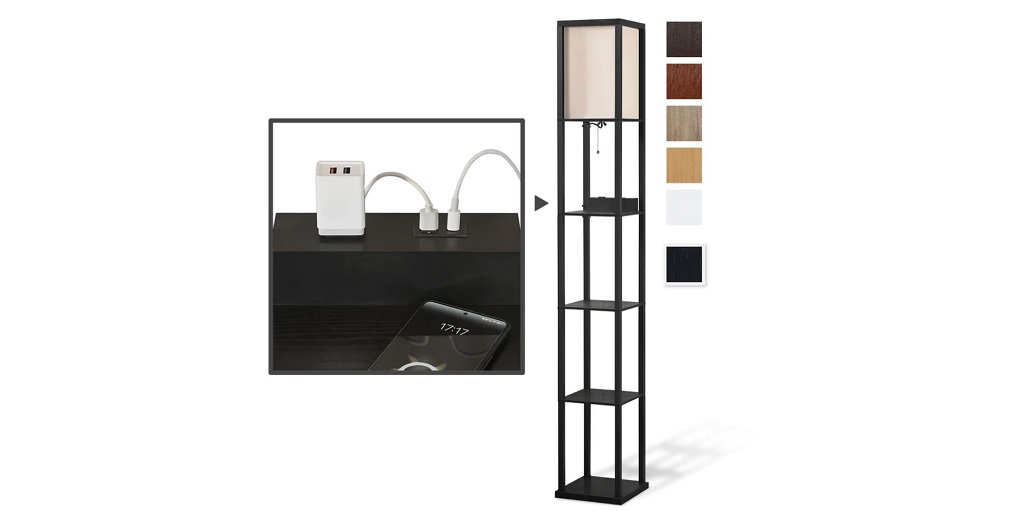
You might buy that floor lamp with shelves and a charging station for the value-added peripherals, but let’s not lose sight of the forest for the trees.
First and foremost, a lamp provides lighting, whether it be task lighting, accent lighting, or mood lighting. It is a tool first and a statement or an accessory next.
So, there are two things you need to be aware of when you’re evaluating interior lighting, and they are light output (measuring in lumens) and color temperature (measuring in Kelvin) which gives an impression of how “warm” or “cool” a light appears.
What Are Lumens?
A lamp’s light output is measured in lumens. Think of lumens as “brightness.” These are sometimes (but importantly, not always) correlated to the power of the bulb in wattage.
A lumen is “the amount of light given out through a solid angle by a source of one-candela intensity radiating equally in all directions.”
While that definition may be accurate, it is not particularly helpful.
In terms that most homeowners will understand, one candle typically throws between 10 and 13 lumens – which is pretty dim.
Most incandescent, halogen, CFL, and LED lights are rated between 200 and 1600 lumens. You can determine how many lumens you need (in part) through square footage.
Bedrooms and sitting rooms need generally between 10 to 20 lumens per square foot of space, whereas kitchens and offices (that need brighter task lighting) generally require between 70 and 80 lumens per square foot.
What Is Light Color Temperature?
The other thing to look at when you buy a floor lamp with shelves and a charging station – or any lamp – is the color temperature of the light.
Color temperature, measured in “degrees” Kelvin, ranges from 1,000K to 10,000K. Most residential lights range from 2,000 to 6,000.
● 1,900-2,200K: These are the warmest color temperatures of all and are fairly rare. Some Edison lamps and filament bulbs will fall within this range. The light is extremely warm yellow, even amber; similar to a candle, which has a color temperature of about 1,800K to 1900K. These lights are excellent for establishing mood lighting.
● 2,700K: A step up, lights with 2,700K color temperatures are much more common. They are still warm yellow, but not as warm as those with 2,000K to 2,200K ratings. These lights are also great for mood lighting.
● 3,000K: Lights with 3,000K color temperature ratings are still warm white, but the color is a little bit cooler, closer to the neutral white of daylight. Lights with these color temperature ratings are good for overhead lighting, task lighting, and use around entryways and doorways.
● 5,000K: 5,000K is a cooler white that is very close to daylight. It’s good for basement lighting, garage lighting, wide-area illumination, and task lighting. This light has a slightly blue tint, and, though it is not as welcoming as light with a warmer color temperature, wakens the senses, making it perfect for task lighting.
How Do These Things Affect Interior Spaces?
Both light output and lighting color temperature will have a profound effect on interior design and interior lighting.
First, it is important to establish an interior lighting scheme in which there is enough ambient light that the occupants of the room can see what they are doing.
Second, the color temperature will influence the spirit of the setting. Warmer lights are more welcoming and create better mood lighting, whereas cooler light, closer to daylight, is better for task lighting and has the effect of stimulating the senses.
Be sure to put these principles into play the next time you buy a new fixture or bulb!
For more information about Floor Lamp With Shelves and Led Corner Floor Lamp Please visit: Atamin International Trading Corporation.


